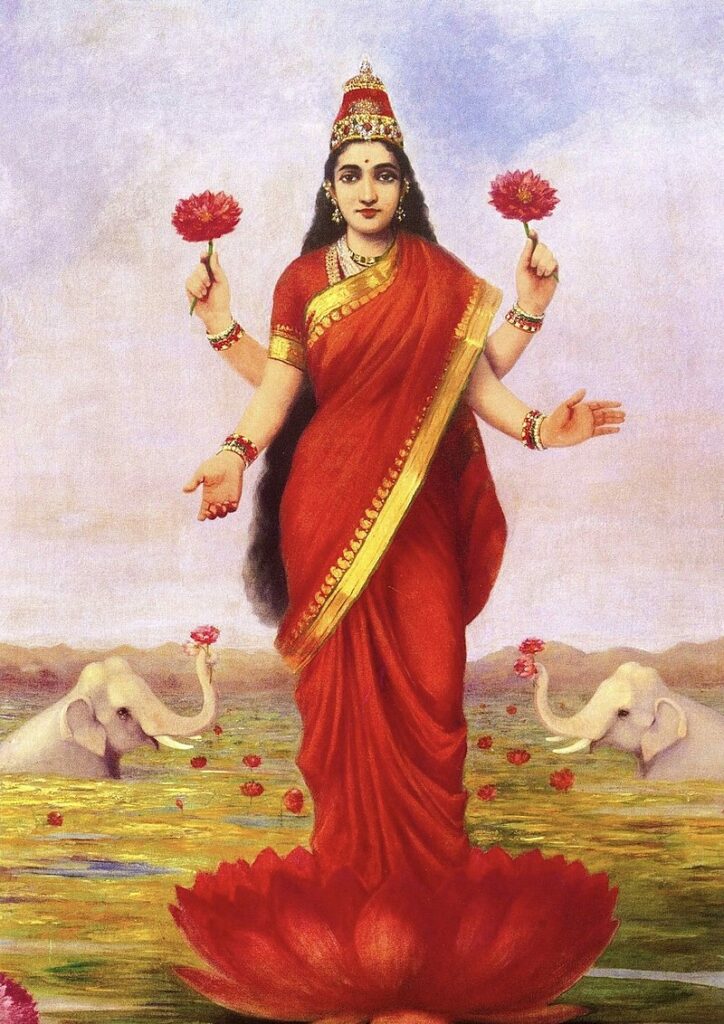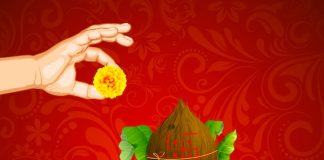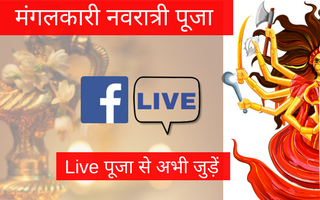Here’s a refined and well-structured rewrite of your content:
Varalakshmi Puja: A Sacred Ritual for Prosperity and Well-being
Varalakshmi Puja is a significant Hindu ritual dedicated to Goddess Lakshmi, the divine consort of Lord Vishnu, one of the principal deities of the Hindu Trinity. The name Varalakshmi signifies “the goddess who grants boons” (Vara means boon). It is believed that performing this puja with utmost devotion brings divine blessings and fulfills wishes. This sacred puja is especially popular in South Indian states such as Karnataka, Andhra Pradesh, Tamil Nadu, and Telangana.
Importance of Varalakshmi Vrat
Varalakshmi Vrat is primarily observed by married Hindu women for the well-being of their husbands, children, and family members. Worshipping Goddess Lakshmi on this day is considered equivalent to worshipping Ashtalakshmi, the eight divine forms of Lakshmi, which symbolize:
- Adi Lakshmi – Eternal wealth
- Dhana Lakshmi – Material wealth
- Dhanya Lakshmi – Abundance of food
- Gaja Lakshmi – Power and strength
- Santana Lakshmi – Progeny and fertility
- Veera Lakshmi – Courage and valor
- Vijaya Lakshmi – Victory and success
- Vidya Lakshmi – Knowledge and wisdom
The Legend of Varalakshmi Puja
The origins of this auspicious puja are rooted in an ancient tale. According to scriptures, there was a noble Brahmin woman named Chaturmathi who lived in Kundina town in the Magadha Kingdom. One night, Goddess Lakshmi appeared in her dream and instructed her to observe the Varalakshmi Vrat to receive divine blessings. Inspired by this vision, Chaturmathi shared her experience with her family and encouraged other women in the village to perform the puja. The tradition spread, and women began worshipping Goddess Varalakshmi on the full moon night with great devotion, seeking prosperity and well-being.
Rituals and Celebrations
On this auspicious occasion, women observe a fast and offer prayers to Goddess Lakshmi. The rituals include:
- Placing a decorated Kalash (symbolizing Lakshmi) or an idol of the deity adorned with a new saree, gold ornaments, and flowers.
- Offering Naivedyam (sweets and food offerings) along with fragrant flowers.
- Chanting Lakshmi mantras and performing the traditional puja with devotion.
One of the unique aspects of this puja is that it can be performed by anyone, regardless of caste or creed, to seek the blessings of health, wealth, and prosperity from Maa Lakshmi.

Spiritual Significance of Varalakshmi Vrat
The Varalakshmi Vrat embodies the essence of the Ashtalakshmi energies, which include:
- Shanti (Peace)
- Prithi (Love)
- Bhu (Earth)
- Sarasvati (Learning & Wisdom)
- Keerthi (Fame)
- Siri (Wealth & Prosperity)
- Pushti (Strength & Vitality)
- Santuti (Happiness & Satisfaction)
Since Lord Vishnu is considered the Ashtalakshmi Pati (the Lord of Ashtalakshmi), his divine energy is believed to govern these eight forms of wealth, ensuring balance and prosperity in the devotee’s life.
Mythological Reference to Varalakshmi Vrat
According to Hindu mythology, Lord Shiva first introduced this vrat to Goddess Parvati, advising her to observe it for the happiness, prosperity, and well-being of her family. Inspired by this, married women across generations have performed this sacred vrat, seeking divine blessings for their husbands, children, and household. Some women also observe this vrat to be blessed with a child.
Naivedyam (Offerings)
There are many dishes that are prepared during this puja. You can choose 5, 7, or 9 dishes to offer from below list-
- Rice Idli
- Rice Appam
- Sweet Samosa
- Paruppu
- Urad dal vada/ Medu Vada
- Cur Vada
- Masala Vada
- Sundal varieties
- Pooran Kozukhattai
- Easy Kozukhattai
- Easy Sweet Pooran Kozukhattai
- Sweet Appam
- Payasam Varieties
- No garlic No Onion Menu
- Poornalu
- Rice varieties
- Andhra Pulihora recipes and many more.
- Pooja Components or Items-
- Rice flour and colors to draw rangoli
- Sandal paste
- Few Banana Leaves
- Thambaalam or a big plate
- Raw rice
- Kalash
- Coconut
- Scented water with Maze, cardamom, Saffron, cloves and edible camphor
- Turmeric powder, Kumkum, Chandan and Askhata
- Lotus flower
- The face of Goddess Lakshmi
- New Saree and gold jewellery
- Flowers and garlands
- Betel leaves, Betelnut
- Banana, fruits and sweets
- Thoram i.e. a sacred thread
- Milk, dry fruits, and nuts
- Panchamrita
Varalakshmi Puja: A Sacred Ritual for Prosperity and Well-being
Varalakshmi Puja is a significant Hindu ritual dedicated to Goddess Lakshmi, the consort of Lord Vishnu, one of the holy Trinity. The term “Varalakshmi” means “the Goddess who grants boons” (Vara), and it is believed that those who perform this puja with unwavering devotion receive her divine blessings. This festival is widely celebrated in the southern states of India, including Karnataka, Andhra Pradesh, Tamil Nadu, and Telangana.
The Significance of Varalakshmi Vrat
Varalakshmi Vrat is primarily observed by married women who pray for the well-being of their husbands, family members, and children. Worshipping Goddess Lakshmi on this day is considered equivalent to worshipping Ashtalakshmi, the eight divine forms of Lakshmi that symbolize different aspects of life:
- Adi Lakshmi – Eternal wealth
- Dhana Lakshmi – Prosperity
- Dhanya Lakshmi – Abundance of food
- Gaja Lakshmi – Power and royalty
- Santana Lakshmi – Offspring and fertility
- Veera Lakshmi – Strength and courage
- Vijaya Lakshmi – Success in endeavors
- Vidya Lakshmi – Knowledge and wisdom
By performing this vrat, devotees seek health, wealth, and happiness for their loved ones.
The Legend Behind Varalakshmi Puja
The origins of this puja are rooted in an ancient legend. It is said that a pious Brahmin woman named Chaturmathi lived with her husband in the prosperous town of Kundina in the kingdom of Magadha. One night, Goddess Lakshmi appeared in her dream and instructed her to observe Varalakshmi Vrat to fulfill her desires. Upon waking, Chaturmathi shared her divine vision with her family and encouraged others in her village to join in the worship.
Following this, many women began observing the puja on the full moon night, adorning a Kalash (a sacred pot representing Goddess Lakshmi) or an idol of the deity with a new saree, gold ornaments, and flowers. The puja involves offering sweets (Naivedyam) and prayers with utmost devotion.
Importantly, Varalakshmi Puja is open to all, irrespective of caste and creed, as it is believed to bring divine blessings to anyone who performs it with sincerity.
The Divine Connection: Lord Shiva and Parvati
Another legend states that Lord Shiva himself recommended this vrat to Goddess Parvati, assuring her that performing it would bring happiness, prosperity, and well-being to her family. Inspired by this, married women began observing this puja for their husbands and children. Some women also perform this vrat to be blessed with a child.
Varalakshmi Puja Vidhi (Procedure)
Step 1: Worship of Lord Ganesha
Every Hindu ritual begins with the worship of Lord Ganesha, the remover of obstacles. Begin by making a small cone-shaped idol of Lord Ganesha and placing it near the Kalash. Offer prayers and chant the following mantra while moving the idol towards the north direction:
Shloka for Ganesha Puja:
Shukla-Ambara-Dharam Vishnum Shashi-Varnnam Chatur-Bhujam |
Prasanna-Vadanam Dhyaayet Sarva-Vighnopashaantaye ||
Step 2: Invocation of Goddess Lakshmi (Avahanam & Anga Puja)
Hold flowers and akshata (unbroken rice) in your right hand and chant the following shloka to invite Goddess Lakshmi into your home:
Lakshmi Ksheera Samudra Raaja Tanaya
Sree Ranga Dhaameshvari
Daasi Bhootha Samasata Deva Vanithaam
Lokaika Deepankuraam
Sreeman Manda Kataaksha Labdha Vibhava
Brahmendra Gangaadharam
Tvaam Trailokya Kudumbineem
Sarasijam Vande Mukunda Priyaam
After invoking the Goddess, proceed to chant 108 names of Lakshmi (Ashtottara Shatanamavali):
After completion of Avahanam chant 108 Shlokas-
“Sri Rasthu”
Shri Lakshmi Astothra
Sadha Naamavali
Aum Prakruthyai Namah
Aum Vikruthyai Namah
Aum Vidyaayai Namah
Aum Sarvabhoothahithapradayai Namah
Aum Shraddhayai Namah
Aum Vibhuthyai Namah
Aum Surabhyai Namah
Aum Paramatmikaayai Namah
Aum Vache Namah
Aum Padmalayaayai Namah
Aum Padmaayai Namah
Aum Shuchaye Namah
Aum Swahaayai Namah
Aum Swadhaayai Namah
Aum Sudhaayai Namah
Aum Dhanyaayai Namah
Aum Hiranmaiyai Namah
Aum Lakshmaiyai Namah
Aum Nityapushtayai Namah
Aum Vibhavaryai Namah
Aum Adhithyai Namah
Aum Dheethyai Namah
Aum Deepthaayai Namah
Aum Vasudhaayai Namah
Aum Vasudhaarinyai Namah
Aum Kamalaayai Namah
Aum Kaanthayai Namah
Aum Kaamakshyai Namah
Aum Kamala sambhavaayai Namah
Aum Anugrahapradhaayai Namah
Aum Buddhaiyai Namah
Aum Anaghaayai Namah
Aum Harivallabhaayai Namah
Aum Ashokaayai Namah
Aum Amruthaayai Namah
Aum Deepaayai Namah
Aum Lokashoka vinashinyai Namah
Aum Dharmanilayaayai Namah
Aum Karunaayai Namah
Aum Lokamatre Namah
Aum Padmapriyaayai Namah
Aum Padmahasthaayai Namah
Aum Padmakshyai Namah
Aum Padmasundariyai Namah
Aum Padmodbhavaayai Namah
Aum Padmamukhyai Namah
Aum Padmanabha priyaayai Namah
Aum Ramaayai Namah
Aum Padmamalaadharaayai Namah
Aum Deviyai Namah
Aum Padminiyai Namah
Aum Padmagandhinyai Namah
Aum Punyagandhaayai Namah
Aum Suprasannaayai Namah
Aum Prasadabhi mukhyai Namah
Aum Prabhaayai Namah
Aum Chandravadhanaayai Namah
Aum Chandraayai Namah
Aum Chandrasahodharyai Namah
Aum Chaturbhujaayai Namah
Aum Chandrarupaayai Namah
Aum Indiraayai Namah
Aum Indhu sheethalaayai Namah
Aum Ahlaadha jananvaya Namah
Aum Pushtyai Namah
Aum Shivaayai Namah
Aum Shivakariyai Namah
Aum Satyaayai Namah
Aum Vimalaayai Namah
Aum Vishwajananyai Namah
Aum Dhustyai Namah
Aum Dharidriya naashinyai Namah
Aum Preethi Pushkarinyai Namah
Aum Shanathayai Namah
Aum Shuklamaalyaambharaayai Namah
Aum Bhaskaryai Namah
Aum Bilva nilayaayai Namah
Aum Vararohaayai Namah
Aum Yashaswinyai Namah
Aum Vasundharaayai Namah
Aum Udhaarangaayai Namah
Aum Harinyai Namah
Aum Hemamalinyai Namah
Aum Dhana dhanyakaryai Namah
Aum Siddhayai Namah
Aum Sthraina Soumyaayai Namah
Aum Shubhapradaayai Namah
Aum Nrubavema gathanandhayai Namah
Aum Varalakshmaiyai Namah
Aum Vasupradhaayai Namah
Aum Shubhaayai Namah
Aum Hiranya praakaaraayai Namah
Aum Samudhra dhanaayayai Namah
Aum Jayaayai Namah
Aum Mangalaayai Namah
Aum Vishnuvakshah Sthalasdhithaayai Namah
Aum Vishnupathnyai Namah
Aum Prasannaakshyai Namah
Aum Narayana Samashrithayai Namah
Aum Dharidriya Dhwamsinyai Namah
Aum Devlakshmi Namah
Aum Sarva padhrava nivaarinyai Namah
Aum Navadurgaayai Namah
Aum Mahakaalyai Namah
Aum Brahma-Vishnu-Shivathmikaayai Namah
Aum Thrikaalagyanasampannaayai Namah
Aum Bhuvaneshwaryai Namah
Aum Mahalakshmi Astothra Sadha Namah
Step 3: Thoram Puja and Reading of the Varalakshmi Story
After completing the Lakshmi Ashtottara Shatanamavali, proceed with the Thoram Puja, which involves tying a sacred thread around the wrist as a symbol of protection and divine blessings. Then, read the Varalakshmi Puja Katha, narrating the significance of this vrat.
Step 4: Offerings and Aarti
In the evening, perform Aarti and offer Naivedyam (food offerings) to Goddess Lakshmi. Devotees usually present coconut, betel leaves, fruits, and sweets to the deity. Married women also exchange gifts, kumkum, and bangles as a sign of goodwill.
After Puja Rituals (Punar Puja & Kalash Immersion)
- Many people remove the Kalash on Friday night, but it is ideal to perform the concluding ritual on Saturday morning.
- Early in the morning, take a bath and worship the Kalash before dismantling it.
- Sprinkle the Kalash water around the house for prosperity and pour the remaining water into a Tulsi plant.
- If rice was used in the Kalash, mix it with the household rice and consume it as a blessing.
- Place the sacred coin from the Kalash in the locker for financial prosperity.
- The Thoram (sacred thread) should be removed after three days or on Saturday.
Date and Time of Varalakshmi Vrat 2025
Varalakshmi Vratam is observed on the second Friday of Shravana month or the Friday before the full moon day. In 2025, the vrat falls on August 8th, 2025.
| Muhuratam | Time | Duration |
| Simha Lagna Pooja Muhuratam | 06:29 AM to 08:46 AM (Morning) | 2 hour 17 mins |
| Vrishchika Lagna Muhuratam | 01:22 PM to 03:41 PM (Afternoon) | 2 hours 19 mins |
| Kumbha Lagna Muhuratam | 07:27 PM to 08:54 PM (Evening) | 1 hour 27 mins |
| Vrishabha Lagna Muhuratam | 11:55 PM to 01:50 AM, Aug 09 (Midnight) | 1 hour 56 mins |

 Aries
Aries Taurus
Taurus Gemini
Gemini Cancer
Cancer Leo
Leo Virgo
Virgo Libra
Libra Scorpio
Scorpio Sagi
Sagi Capri
Capri Aquarius
Aquarius Pisces
Pisces









